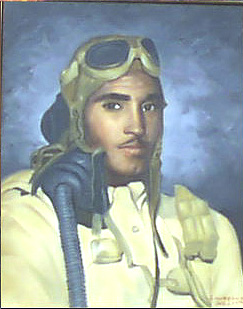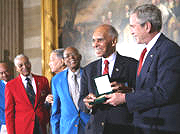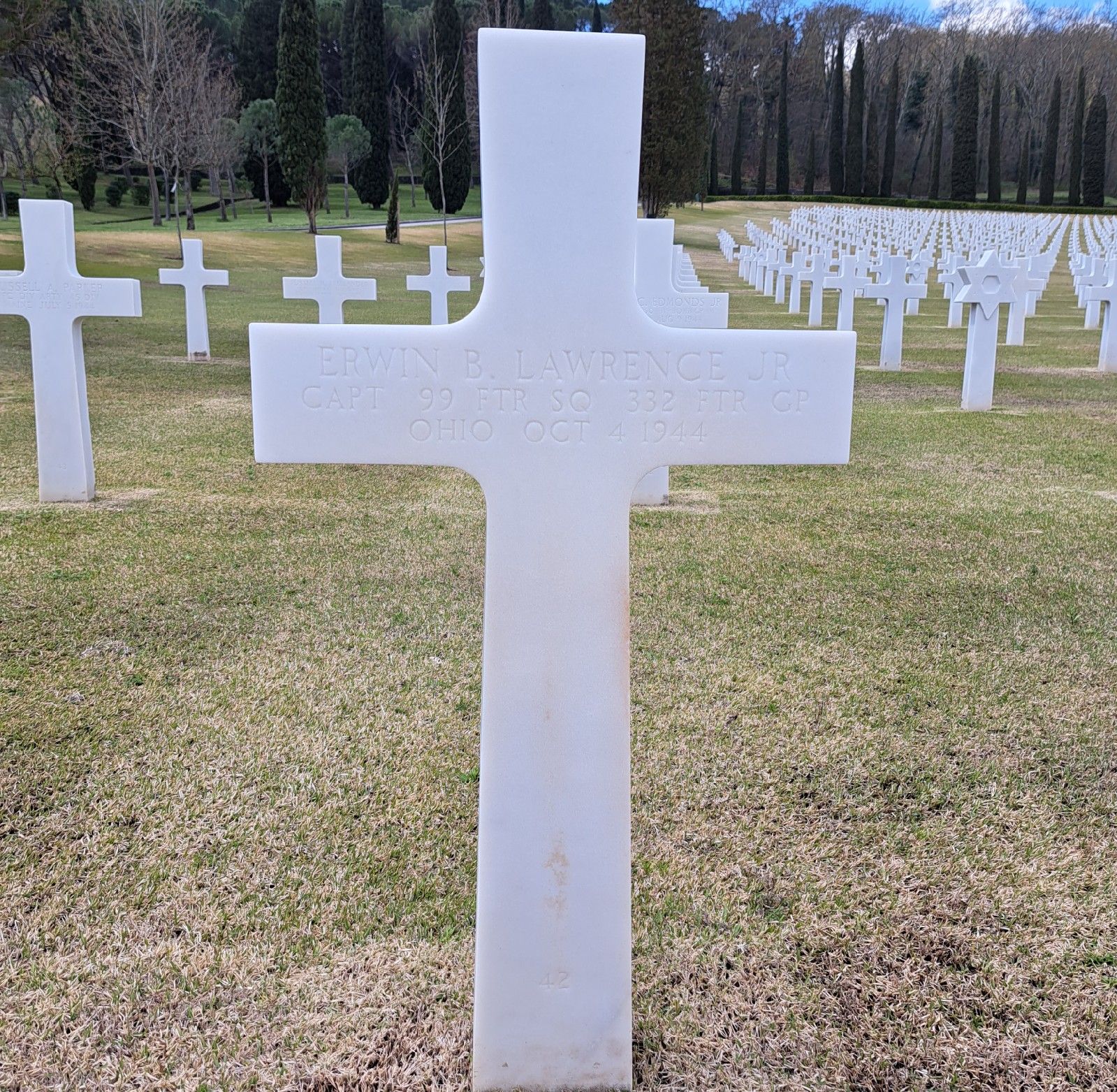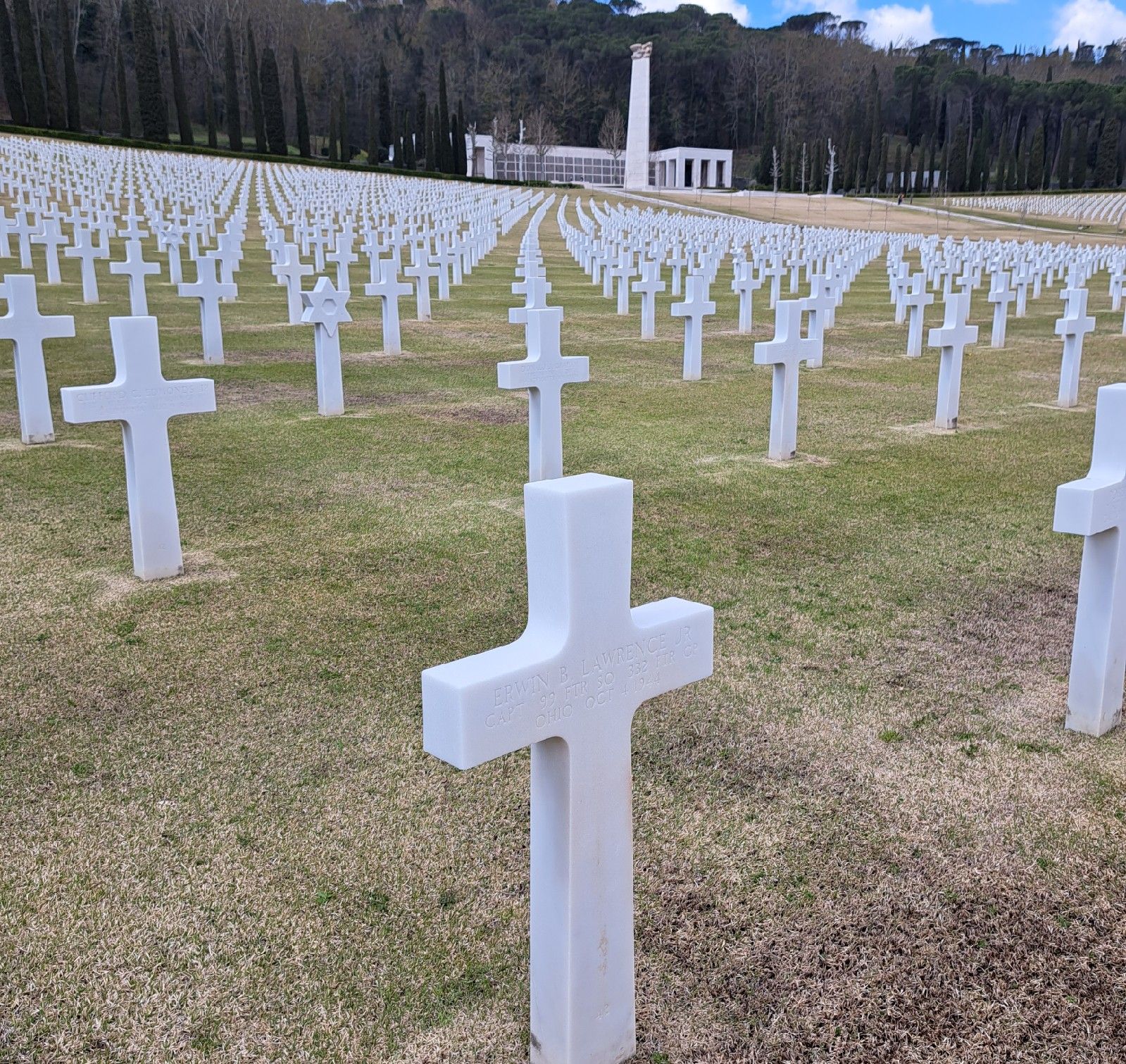Captain Lawrence and his fellow pilots shipped out to Italy in April 1943, with no combat experience and began the most impressive air battle record of any group in history. Their primary mission was to escort Allied bombers through treacherous European airspace, repelling German fighters from attacking the Allied bombers. These Black fighter pilots protected the bombers they escorted in hair-raising dogfights. The Tuskegee Airmen, gave protection in their red-tailed fighting planes, all the way into the bomb territory instead of hanging back out of flak range as did the white escort units. In all of their 1,578 missions they never lost one of their charges to an enemy fighter. Their reputation was so spectacular the bombers avoided the other fighter escorts and requested the Black fighters. A bomber pilot said, "The Tuskegee Airmen are the best of shepherds."
By the end of the war, the Tuskegee Airmen had destroyed or damaged more than 950 vehicles on the ground and 400 enemy aircraft--charting one air-combat record of thirteen kills in a single day. The fighters had also sunk a German destroyer.
All of this was accomplished by the Tuskegee Airmen even though they were vilified, not spoken to by most white airmen, and called derogatory names by the others. The fact that they were in a totally segregated unit made them targets of discrimination for supplies, guns, and planes. They received the older planes, the most broken down and the worse equipment. As fighter pilots they were only accepted functionally, that is as "shepherds," not as fellow human beings. To accomplish the setting of a record unmatched by any other group in aviation history is almost miraculous.
After the war, the Tuskegee Airmen, in recalling the way they were treated not only by history, but by their fellow pilots, set their experiences down in a book. The title of the book best expressed the depths of their anguish. They called their book The Lonely Eagles.
Captain Lawrence and his fellow pilots shipped out to Italy in April 1943, with no combat experience and began the most impressive air battle record of any group in history. Their primary mission was to escort Allied bombers through treacherous European airspace, repelling German fighters from attacking the Allied bombers. These Black fighter pilots protected the bombers they escorted in hair-raising dogfights. The Tuskegee Airmen, gave protection in their red-tailed fighting planes, all the way into the bomb territory instead of hanging back out of flak range as did the white escort units. In all of their 1,578 missions they never lost one of their charges to an enemy fighter. Their reputation was so spectacular the bombers avoided the other fighter escorts and requested the Black fighters. A bomber pilot said, "The Tuskegee Airmen are the best of shepherds."
By the end of the war, the Tuskegee Airmen had destroyed or damaged more than 950 vehicles on the ground and 400 enemy aircraft--charting one air-combat record of thirteen kills in a single day. The fighters had also sunk a German destroyer.
All of this was accomplished by the Tuskegee Airmen even though they were vilified, not spoken to by most white airmen, and called derogatory names by the others. The fact that they were in a totally segregated unit made them targets of discrimination for supplies, guns, and planes. They received the older planes, the most broken down and the worse equipment. As fighter pilots they were only accepted functionally, that is as "shepherds," not as fellow human beings. To accomplish the setting of a record unmatched by any other group in aviation history is almost miraculous.
After the war, the Tuskegee Airmen, in recalling the way they were treated not only by history, but by their fellow pilots, set their experiences down in a book. The title of the book best expressed the depths of their anguish. They called their book The Lonely Eagles.
Family Members
Sponsored by Ancestry
Advertisement
Advertisement
















